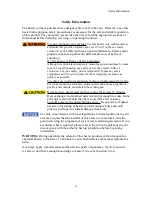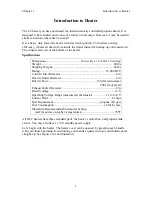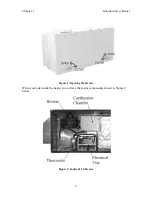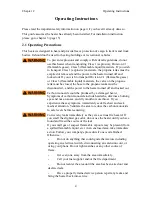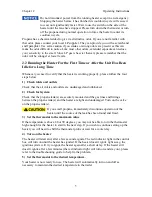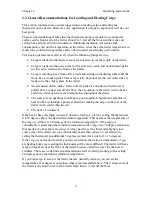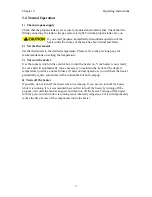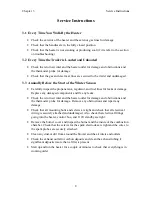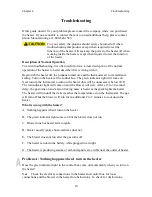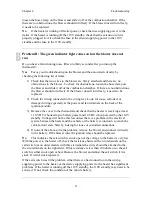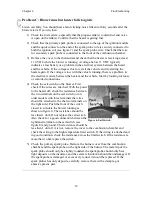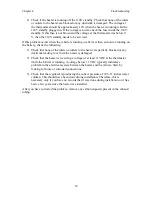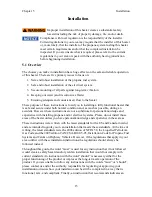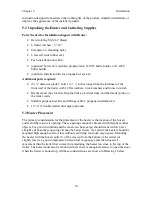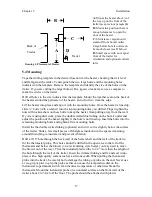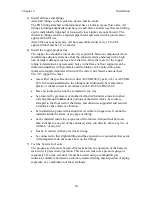
Chapter 4
Troubleshooting
2) Check if the heater is running off the 110V standby. Check that none of the inlets
or outlets to the heater are blocked or any ductwork is damaged. The voltage at
the thermostat should be approximately 12V when the heater is running with the
110V standby plugged in. If the voltage is lower, check the fuse inside the 110V
standby. If this fuse is not blown and the voltage at the thermostat was below 11
V, then the 110V standby needs to be serviced.
If this problem occurs when the vehicle is running or after less than an hour of running on
the battery, check the following:
1) Check that none of the inlets or outlets to the heater are partially blocked or any
ductwork leading to or from the heater is damaged.
2) Check that the heater is receiving a voltage of at least 11VDC at the thermostat
while the blower is running. A voltage below 11 VDC typically indicates a
problem in the electrical system between the heater and the vehicle. Start by
looking for loose or corroded connections.
3) Check that the regulator is producing the correct pressure of 10.5-11 inches water
column. This should have been done during installation. Therefore, this is
necessary only if you have no records that it was done during installation or it has
been a few years since the heater was installed.
After you have corrected the problem, remove any carbon deposits present in the exhaust
tubing.
14

